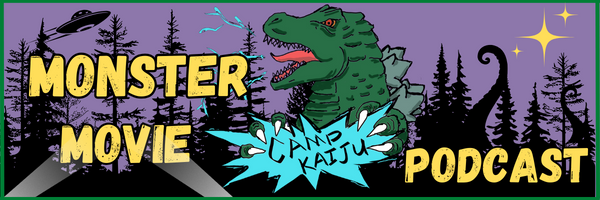*Spoilers*
Chapter Seven is a long one, yet never feels frivolous; the Duffer Brothers finally accept that Mike and Will’s side-quest is not the most important needle to thread. Rightful attention is directed to Hopper’s Soviet struggles; Upside Down adventures; and Eleven overcoming the Nina Project. Each of these stories has always offered variance in tone, from adventure-comedy to spooky atmosphere to science fiction mind-games. For the first time, however, they all meld into overarching bliss. Only a title as bombastic as “The Massacre at Hawkins Lab” can capture the equally explosive content of Chapter Seven.
Director: Matt Duffer, Ross Duffer
Writers: Caitlin Schneiderhan, (Matt Duffer; Ross Duffer, creators)
Runtime: 99 minutes
US Release: May 27, 2022; Netflix
Hopper (David Harbour), for example, finally confronts the long-awaited Demogorgon. It is a captivating sequence of events, relying more on action than horror. After Joyce (Winona Ryder) and Murray (Brett Gelman) successfully infiltrate the Soviet prison, they must watch aghast as Hopper and Enzo (Tom Wlaschiha) combat the Demogorgon in gladiatorial fashion. This kicks Joyce and Murray into action; through some suspenseful trial-and-error they finally manage to open the doors that lead Hopper and Enzo to safety. What makes this scene so memorable is not the “will-they-open-the-doors-in-time” convention; the end result is never in question. What makes the scene stand out is the use of location. By placing the familiar (i.e. the Demogorgon) in an unfamiliar space (i.e. a snowy trial by combat) our expectations are jolted. After three seasons, any way Stranger Things can shake up preconceptions is a welcomed move.

As for the Hawkins gang, they remain divided. Nancy (Natalia Dyer), Steve (Joe Keery), Robin (Maya Hawke), and Eddie (Joseph Quinn) discover they can communicate with Dustin (Gaten Matarazzo), Max (Sadie Sink), and Lucas (Caleb McLaughlin) through lamps, light bulbs, and a Lite Brite. They all resolve to meet at Eddie’s trailer where Chrissy’s death has seared a gate into the ceiling. Vecna, meanwhile, has caught wind of their presence in his world. Despite this, however, the tone remains surprisingly light. The cheerfulness of friends solving a puzzle overwhelms any sense of doom. That is until the final moment. As the Upside Downers clamber through the gate, Nancy is sucked into Vecna’s possession where she witnesses the trauma of his past life. The Duffer Brothers successfully pull the rug on any happy reunion.

Back at the Nina Project, Eleven (Millie Bobby Brown) is induced into a final unconsciousness where she relives the ill-fated day at Hawkins Lab. Up until now, season four has teased the events of the massacre; a blood-spattered El is repeatedly portrayed standing amongst the violently mangled bodies of her psychic brethren. As the memory unfolds, we’re introduced once more to her supposed ally – Henry (Jamie Campbell Bower) the tall, blond orderly. His presence, however, feels slightly disturbed this time around. The atmosphere shifts. Chapter Seven is readying something big. As you settle on the edge of your seat, “The Massacre at Hawkins Lab” settles into itself. Schneiderhan and the Duffers know they have you. You’re not going anywhere. Why not enjoy a classic villain monologue?
The monologue belongs to Henry. As he recounts the torments of his youth, the tale unfolds via Nancy’s experiences in Vecna’s mind. More than just a conventional flashback, however, this serves as insight into the character’s memory. This connects the dots between Henry and Vecna. Gradually you realize that Vecna is Henry Creel, who killed his family in the same twisted eye-popping fashion as the kids of Hawkins. After the murders, Henry was taken in by Papa (Matthew Modine) and became the mysterious One. The massacre then, was not Eleven’s doing, but Henry’s upon regaining his powers. While Eleven was initially spared his wrath, he turns on her after she refuses to join him in villainy. A fight ensues and Eleven overcomes Henry’s powers, unwittingly banishing him to the Upside Down and opening the rift between that world and ours.

Reflecting the rest of season four’s tone, even this enormous reveal is treated nice and easy. Henry’s monologue pours out with a steady conviction while Eleven just listens. This can certainly be criticized as unoriginal, but it could also be seen as an effective use of the “villainous monologue” trope. While potentially cheesy, Chapter Seven plays it earnestly. It is the same methodology used by fiction’s most famous supervillains (Darth Vader and Magneto come to mind). Considering the superhero pastiche of season four, this seems intentional. While stylistically unoriginal, the whole construct is nonetheless executed with aplomb – ripped straight from the superhero playbook.
Stranger Things has never been afraid to dabble in other popular genres. “The Massacre at Hawkins Lab” is a prime example of what’s possible when creators are willing to both experiment and deliver tried-and-true conventions.
by Vincent S. Hannam
